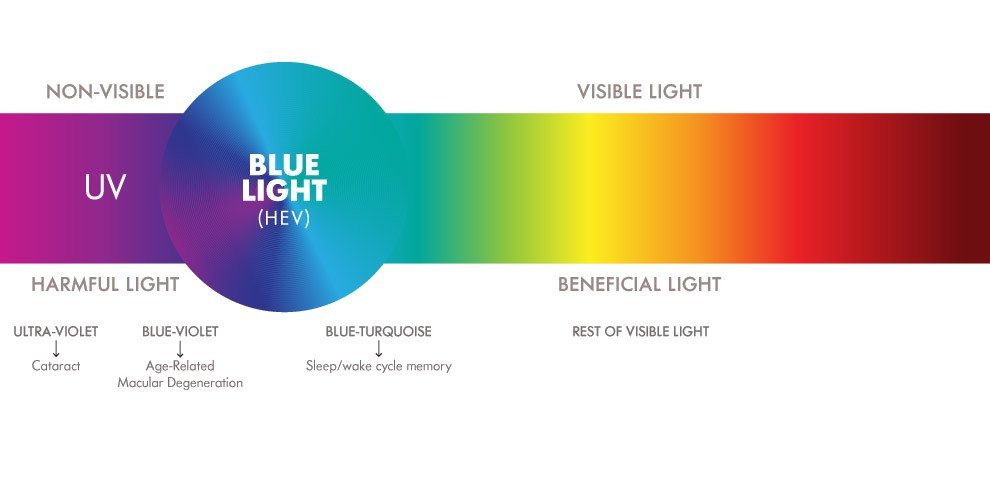In today’s digital age, we are surrounded by electronic devices like smartphones, tablets, laptops, and computer screens. Even though these gadgets are helpful and make our lives easier, they also give off blue light, which can be bad for our eyes. Long-term exposure to blue light can cause digital eye strain, trouble sleeping, and other long-term problems with eyesight. This eye strain caused by protracted exposure to bright screens is also referred to as Computer vision syndrome.
In this piece, we’ll discuss ways to protect our eyes from the harm blue light can cause.
Why is blue light a cause of concern for our eyes?
Blue light is a high-energy visible (HEV) light with a short wavelength. Digital screens, electronic devices, and natural sources like the sun emit it. Blue light is not all bad; it regulates our circadian rhythm and boosts daily alertness. However, excessive exposure, especially at night, can disrupt our sleep patterns and cause eye strain.
Use Blue Light Filters
Most digital devices have built-in blue light filters or “night mode” settings. These filters reduce the amount of blue light emitted by the screen, making it easier on the eyes during extended use, particularly in the evening. Enable these device filters and adjust the settings according to your comfort and lighting conditions.
Invest in Blue Light Blocking Glasses
Blue light-blocking glasses are specially designed to filter out a significant portion of blue light from reaching your eyes. They are available with or without prescription lenses, making them suitable for everyone. These glasses protect your eyes from digital eye strain and improve sleep quality by reducing exposure to blue light before bedtime.
Follow the 20-20-20 Rule
To prevent digital eye strain, practice the 20-20-20 rule: every 20 minutes, take a 20-second break and focus on something at least 20 feet away. This simple exercise helps relax your eye muscles and reduces eye fatigue caused by continuous screen use.
Adjust Screen Brightness and Contrast
Maintain appropriate screen brightness and contrast levels to reduce eye strain. A screen that is too bright or too dim can put additional stress on your eyes. Adjust the settings to find a comfortable balance that suits your surroundings.
Optimize Workspace Ergonomics
Ensure your workspace is ergonomically designed to promote eye comfort. Position your monitor at eye level, roughly 20 to 24 inches from your face. Adjust the screen angle to minimize glare from surrounding lights and windows.
Create a Blue Light-free Bedtime Routine
Avoid using digital devices at least an hour before bedtime to allow your body to wind down for sleep naturally. Instead, relax by reading a book, meditating, or listening to soothing music. This routine will help you get better quality sleep and reduce the risk of digital eye strain.
Consider Blue Light Screen Protectors
Consider using blue light screen protectors on your devices for an additional layer of protection. These thin films effectively reduce blue light transmission without affecting the device’s functionality or display quality.

Blog Summary
If you use these tips daily, you can protect your eyes from the dangerous effects of blue light from digital devices in a big way. By letting people know about the possible risks and taking these precautions, you can enjoy the benefits of technology while keeping your precious eyesight safe for years to come. Remember that healthy eyes are part of a healthier and happy life.

